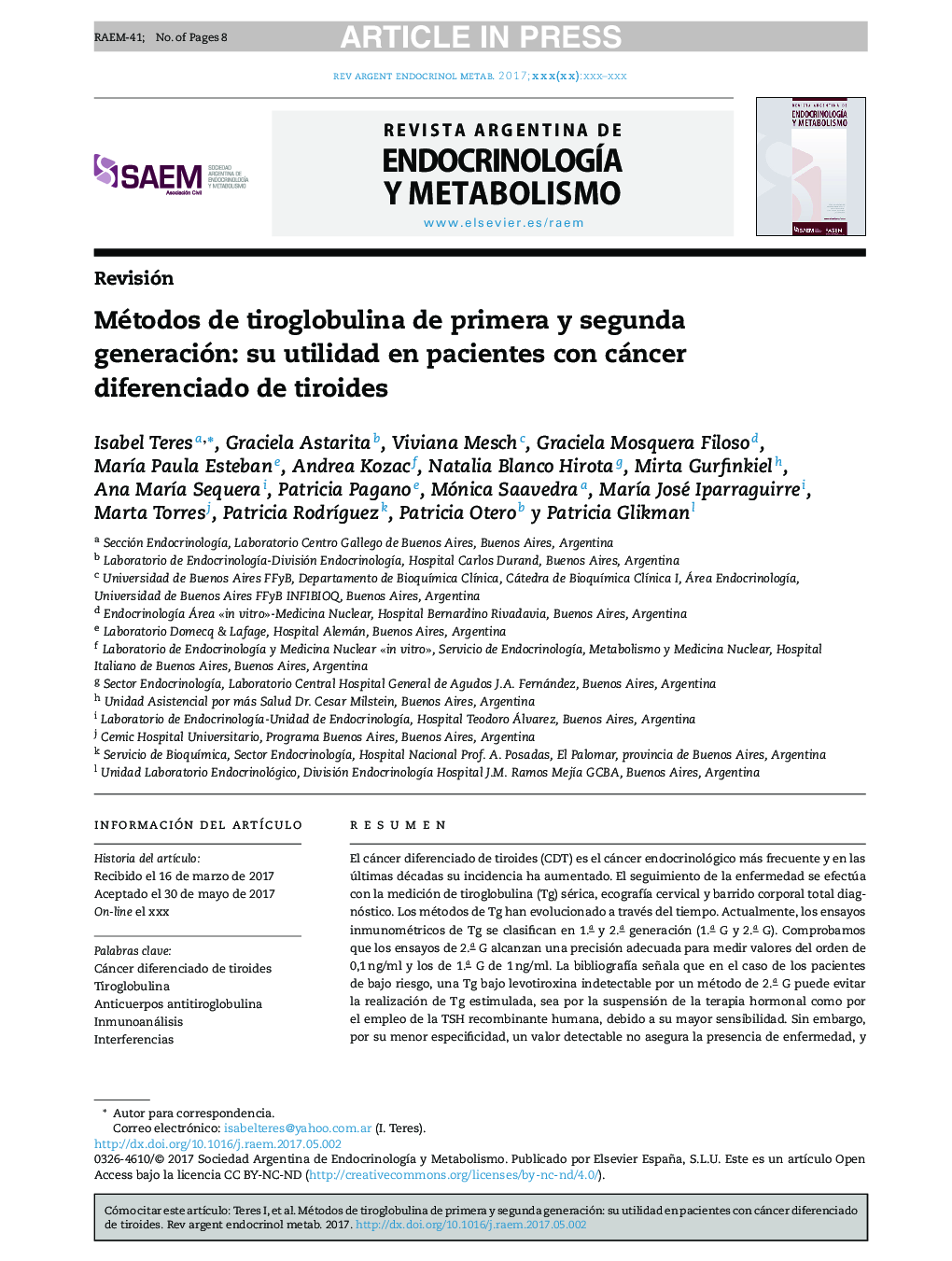| Article ID | Journal | Published Year | Pages | File Type |
|---|---|---|---|---|
| 8724416 | Revista Argentina de Endocrinología y Metabolismo | 2017 | 8 Pages |
Abstract
Differentiated thyroid cancer (DTC) is the most common endocrine cancer (tumour) and its incidence has risen in the past decades. Its follow-up includes measuring serum thyroglobulin (Tg), performing neck ultrasound and a diagnostic whole-body scan. Tg assays have evolved with time. At present immunoassays for Tg are classified as 1Â st and 2Â nd generation assays (1Â st G and 2Â nd G). 2Â nd G assays show an adequate (good) precision at levels close to 0.1Â ng/ml and 1Â st G assays at levels close to 1Â ng/ml. The literature shows that for low risk patients on levothyroxine treatment, who undetectable levels by 2Â ªG assays can avoid the stimulation test performed by thyroid hormone withdrawal or after recombinant human TSH, due to better sensitivity. However, due to lower specificity, detectable levels do not confirm the presence of disease (tumour), and should be confirmed. To optimise the clinical usefulness of the test, cut-off values specific for population and method should be used, instead of functional sensitivity or quantification limit. Critical issues for measuring Tg are discussed, such as non-harmonisation of methods, and interferences, mainly by anti-thyroglobulin antibodies (ATg). 1Â st and 2Â nd G assays are less useful in presence of ATg, and follow up of such patients is limited. Consensus between physicians and the laboratory on technical issues and interpretation criteria of Tg values is of outmost importance in the follow-up of DTC patients.
Keywords
Related Topics
Health Sciences
Medicine and Dentistry
Endocrinology, Diabetes and Metabolism
Authors
Isabel Teres, Graciela Astarita, Viviana Mesch, Graciela Mosquera Filoso, MarÃa Paula Esteban, Andrea Kozac, Natalia Blanco Hirota, Mirta Gurfinkiel, Ana MarÃa Sequera, Patricia Pagano, Mónica Saavedra, MarÃa José Iparraguirre, Marta Torres,
